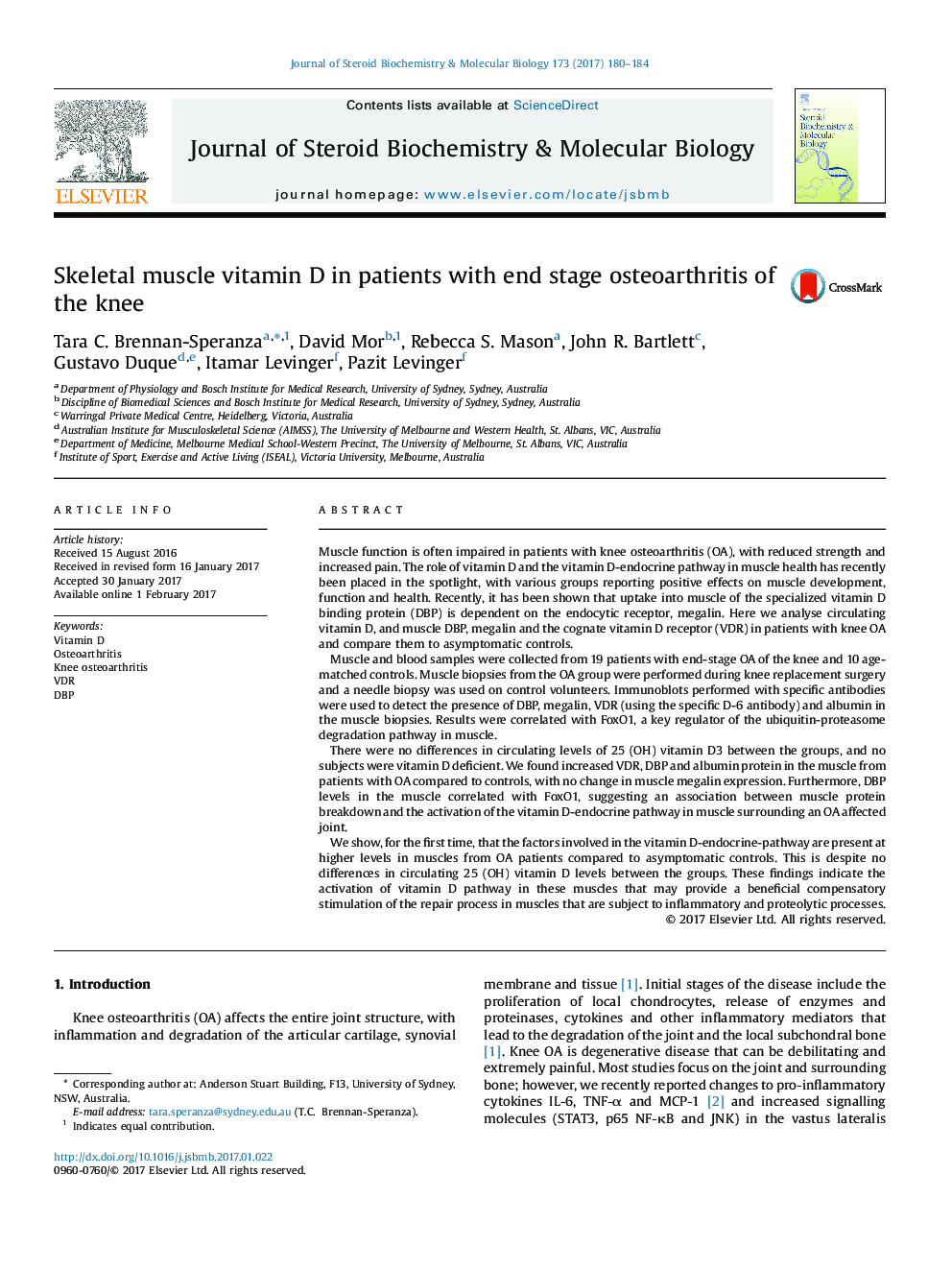| کد مقاله | کد نشریه | سال انتشار | مقاله انگلیسی | نسخه تمام متن |
|---|---|---|---|---|
| 5513005 | 1540974 | 2017 | 5 صفحه PDF | دانلود رایگان |

- The vitamin D receptor (VDR) is clearly detected by immunoblot from biopsies of human vastus lateralis (quadriceps) muscle.
- Patients with knee osteoarthritis have more VDR and DBP in skeletal muscle compared to controls, with no difference in megalin expression.
- Muscle DBP correlates with FoxO1, linking protein breakdown to vitamin D pathway activation in muscle surrounding an OA affected joint.
Muscle function is often impaired in patients with knee osteoarthritis (OA), with reduced strength and increased pain. The role of vitamin D and the vitamin D-endocrine pathway in muscle health has recently been placed in the spotlight, with various groups reporting positive effects on muscle development, function and health. Recently, it has been shown that uptake into muscle of the specialized vitamin D binding protein (DBP) is dependent on the endocytic receptor, megalin. Here we analyse circulating vitamin D, and muscle DBP, megalin and the cognate vitamin D receptor (VDR) in patients with knee OA and compare them to asymptomatic controls.Muscle and blood samples were collected from 19 patients with end-stage OA of the knee and 10 age-matched controls. Muscle biopsies from the OA group were performed during knee replacement surgery and a needle biopsy was used on control volunteers. Immunoblots performed with specific antibodies were used to detect the presence of DBP, megalin, VDR (using the specific D-6 antibody) and albumin in the muscle biopsies. Results were correlated with FoxO1, a key regulator of the ubiquitin-proteasome degradation pathway in muscle.There were no differences in circulating levels of 25 (OH) vitamin D3 between the groups, and no subjects were vitamin D deficient. We found increased VDR, DBP and albumin protein in the muscle from patients with OA compared to controls, with no change in muscle megalin expression. Furthermore, DBP levels in the muscle correlated with FoxO1, suggesting an association between muscle protein breakdown and the activation of the vitamin D-endocrine pathway in muscle surrounding an OA affected joint.We show, for the first time, that the factors involved in the vitamin D-endocrine-pathway are present at higher levels in muscles from OA patients compared to asymptomatic controls. This is despite no differences in circulating 25 (OH) vitamin D levels between the groups. These findings indicate the activation of vitamin D pathway in these muscles that may provide a beneficial compensatory stimulation of the repair process in muscles that are subject to inflammatory and proteolytic processes.
Journal: The Journal of Steroid Biochemistry and Molecular Biology - Volume 173, October 2017, Pages 180-184